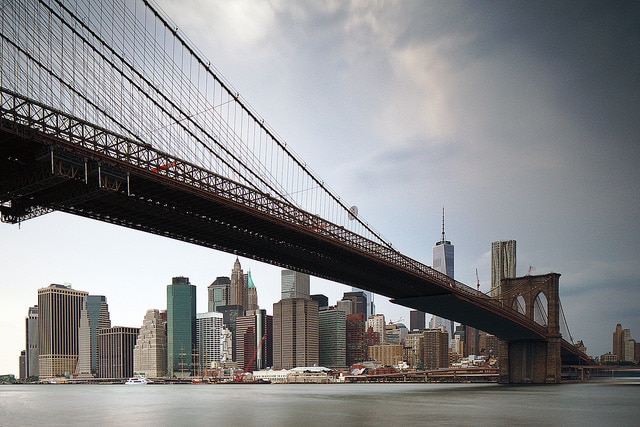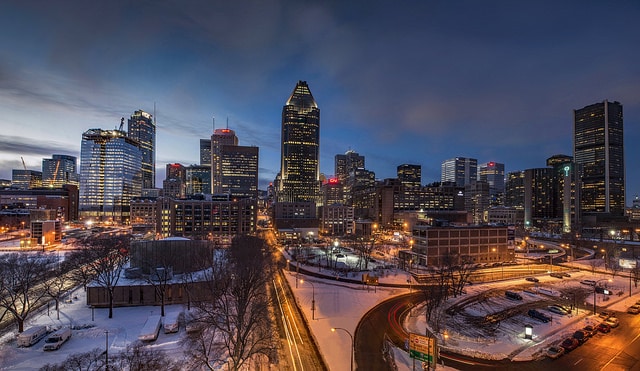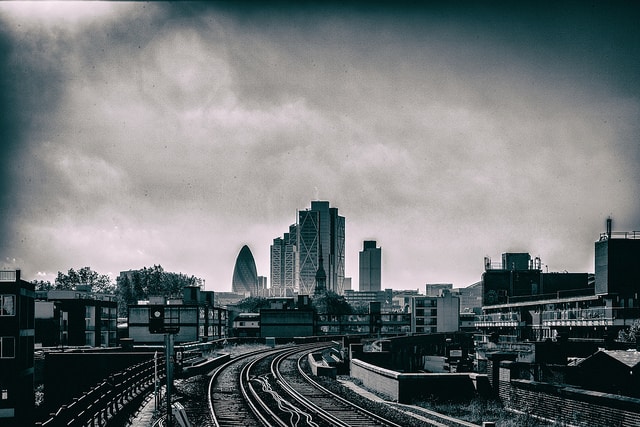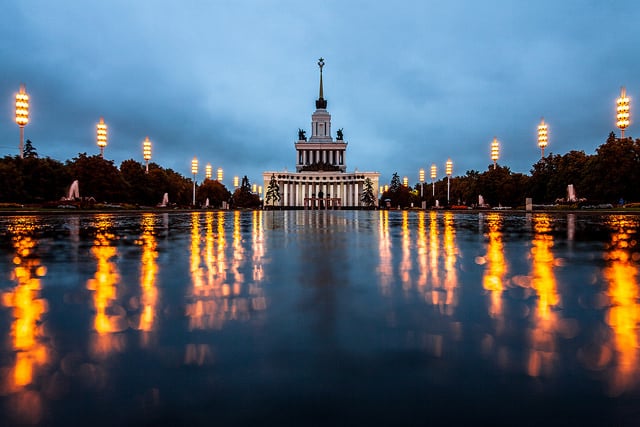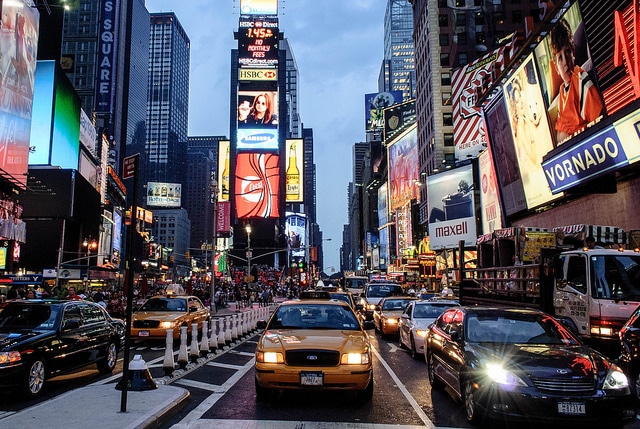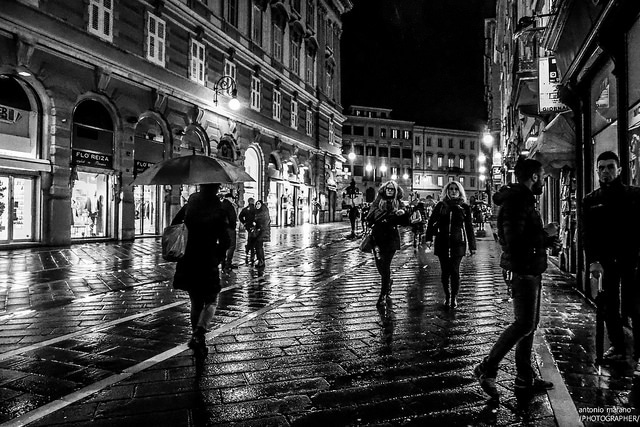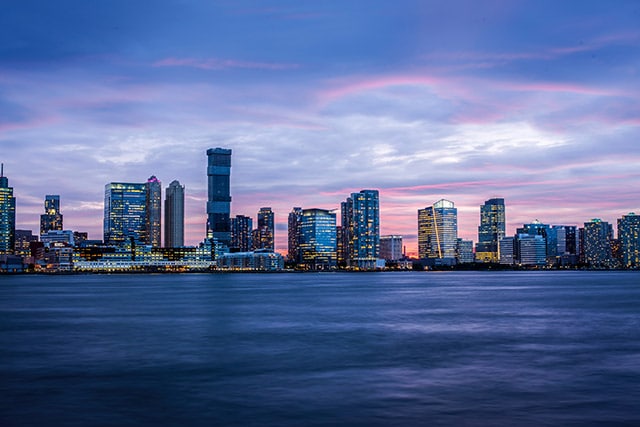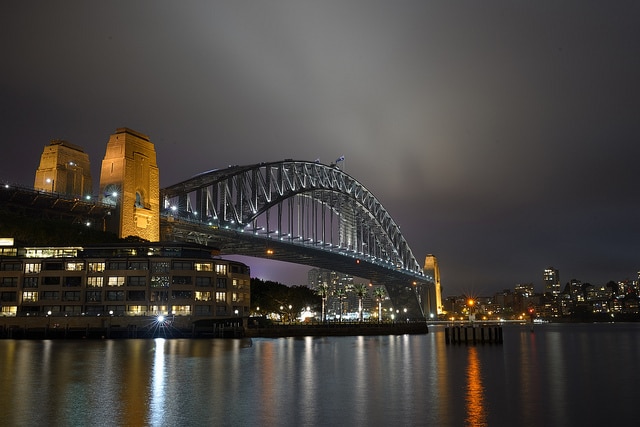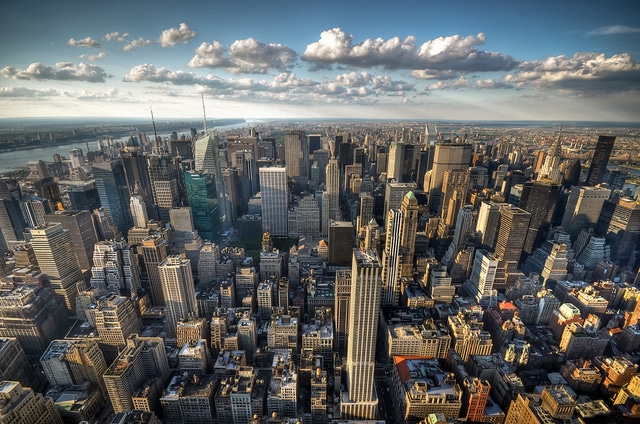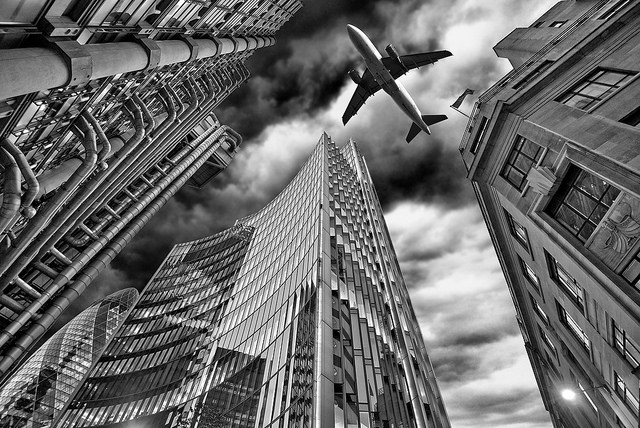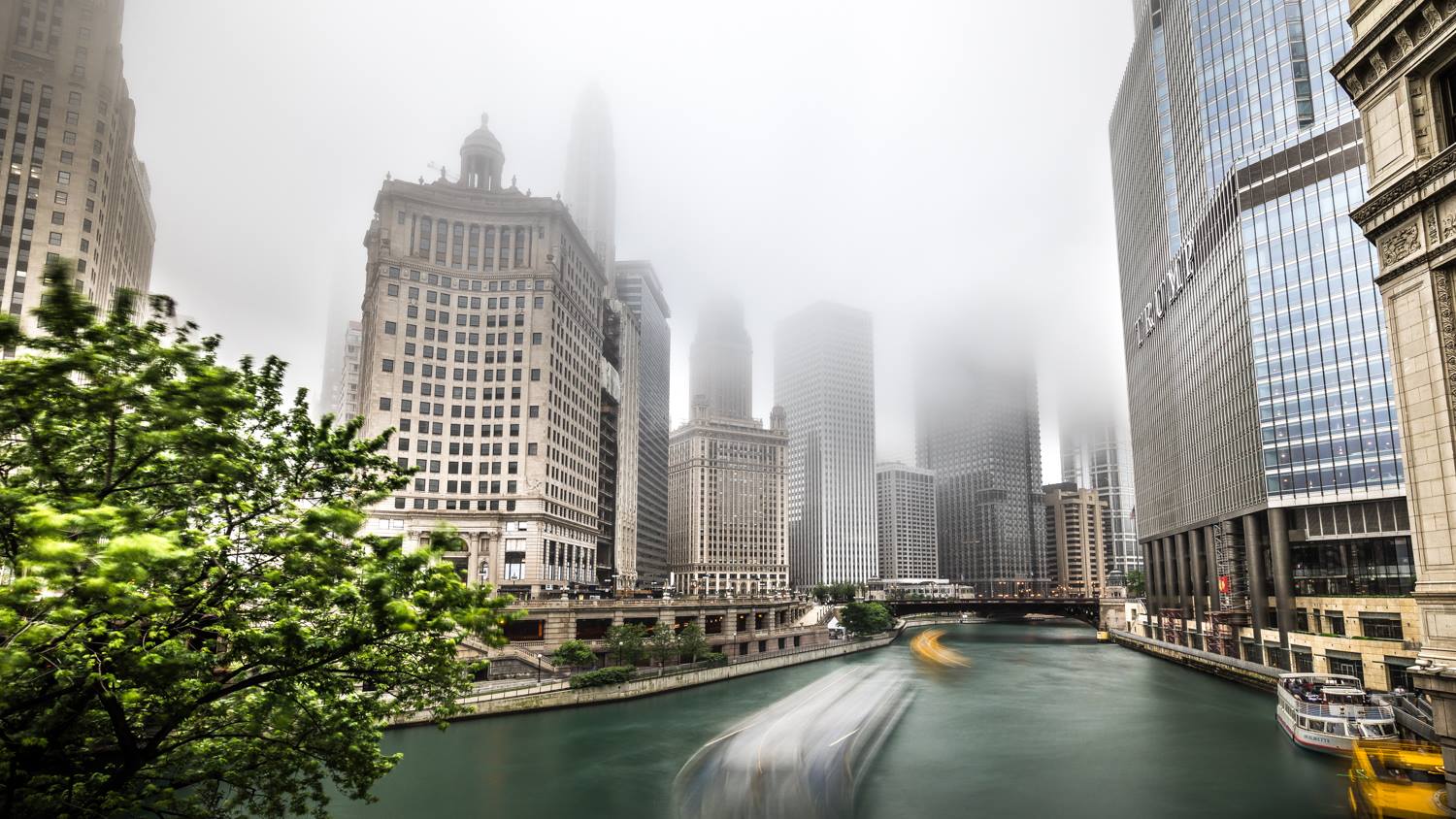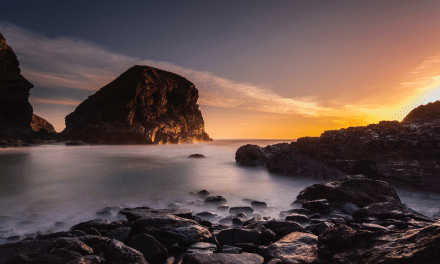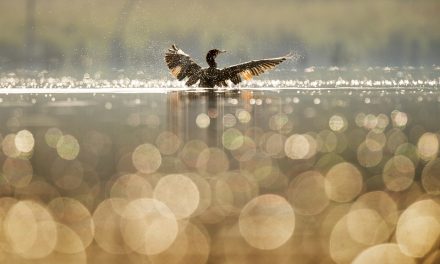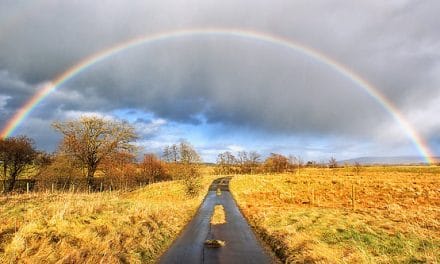While most landscape photographers enjoy photographing sweeping mountain vistas and rushing rivers –there’s another type of photography that you may want to try your hand at as well –cityscape photography.
Just because they may be short on trees and fields, doesn’t mean that cities are lacking in drama or beauty. There are plenty of fascinating details just waiting to be discovered in the city, and great landscape photographers are at an advantage when it comes to drawing those details out.
If you’re able to compose landscape images –then you’ll be able to make the switch to cityscapes easily. Here’s a look at a few tips that will help you to create some amazing urban images –while capturing the excitement and energy that cities have to offer.
1. Timing is Everything
When it comes to getting the most out of your cityscape, timing is important. While it’s true that you can capture cities at any time of the day, urban environments tend to photograph a lot better at certain times of the day –and during certain weather.
- Early Morning
Early morning is a great time to photograph your city at a time when few people see it. Very early morning also means that fewer people will be out, you and your camera will have the streets largely to yourself. If it’s a clear day, the early morning golden hour can be a great time to capture the city, as it will be bathed in beautiful golden light.
- Just Before Dusk
Alternatively, the late evening can also be a great time to capture urban landscapes. During this time of day, the sun will appear lower in the sky, which means beautiful, saturated colors. If there’s a storm rolling in, all the better –afternoon storms can result in some exciting cloud formations and can add some excitement and drama to your cityscape images.
- After Dark
Finally, at night, the city is illuminated with beautiful lights –making it a perfect time to capture light trails or buildings that are aglow. Take advantage of this time, and use it to create some unique and spectacular images.
2. Work With the Light
Heading out at the right time of day can reward you with the type of lighting you are looking for –and paying attention to the direction of light will also help your images to turn out better. When you’re shooting in the day, in most cases you’ll want to shoot with the sun behind your shoulder for minimal shadows, decent illumination –and a sky that’s clearer blue as well.
3. Look for Leading Lines
Cities present the perfect opportunity to incorporate leading lines into your images. Lines are a great way to create a sense of depth and distance in your compositions, and can also be used to lead the eye on through the photo, to a focal point, or the disappearing point at the horizon. Roads, light trails, and buildings can all create eye-catching lines that you can use when composing your images.
4. Look for Water
If you’re out at night, you’ll want to look out for opportunities to include water in your compositions. At night, the water will reflect the lights of the city, adding much-needed light and color to your photos. While some cities are located at the edge of the water, even cities that are inland can present great opportunities for reflections –just wait until after a rain storm to head out.
The city will be awash in water, and you’ll be able to capture the lights that reflect off of the puddles and wet surfaces. The colors will be more vibrant and saturated as well.
5. Draw Out the Details
Paying attention to the details is especially important when it comes to cityscape photography, but the great thing about cities is that they’re never lacking in detail. Keep your eyes open for interesting elements that you can showcase in your images, and frame your shots in a way to draw out the details, without overwhelming the composition.
6. Include People In Some of Your Images
If there are people about, why not include them in your images? Capturing the crowds or incorporating a lone passerby into your composition can help to add detail and even a focal point to your images. You could also blur your shutter speed slightly to capture the moving crowd, and to create a sense of motion.
If you want to capture shots without the crowds, use a very slow shutter speed to blur them out, and remove them from your images altogether.
7. Bring Your Tripod –Or a Substitute
When it comes to shooting cityscapes, especially at night, you’ll need a steady surface to support your camera. Usually, you’ll want to bring a tripod, however, some cities have started cracking down on tripods in public –if you find yourself in one of these areas, consider bringing along a couple of small beanbags instead.
Use them to help steady your camera if you need to set it on a stable surface.
8. Use a Wide-Angle
One of the best lenses for cityscape photography is wide-angle. Focal lengths between 12-35mm are ideal –and it’s worth investing in this lens if you’re serious about nightscape photography. Wide angles will allow you to capture a wide skyline, and will also allow you to accentuate the sense of depth in a photo –resulting in converging lines and creating a sense of distance between the foreground and background.
You could also consider renting a wide-angle to see how you like it before you shell out for one of your own.
→ Related reading: Reviews of the Best Wide Angle Lenses for Canon DSLRs and Reviews of the Best Wide Angle Lenses for Nikon DSLRs.
9. Get Up High
Let’s face it, there’s a lot to see in the city –and the best place to see it is often from a distance. To view the city in all of its beauty, you’ll want to find a vantage point that will offer you the best views. You’ll want to research ahead of time to see what buildings will allow you access to the top floors –then be sure to take advantage of this chance to capture a bird’s eye view of the city.
You may also want to look for a distant point that affords great views of the skyline. Skylines are especially beautiful at night when the city takes on a beautiful glow –something you can capture by using a tripod and a slow shutter speed.
10. Look Up
While you’ll want to capture some of your landscapes from vantage points, working among the city can present some great opportunities for getting up close to skyscrapers, bridges, and other amazing pieces of architecture. When wandering among the buildings, look for opportunities to capture looming buildings directly above you for beautiful and eye-catching photos of architectural wonders.
Getting down low, and using a wide-angle will help you to fit it all in.
While it’s important to relax and enjoy yourself when you’re out capturing images –remember to be aware of your surroundings, and stay safe. It’s also a good idea to go with a friend –especially if you’re planning to tour unfamiliar places at night.
Finally, remember to have fun! Capturing cityscapes can be a challenge, but it can also be enjoyable and extremely rewarding and with a bit of practice, you’ll soon be adept at creating beautiful and eye-catching urban images.
The Best Cityscape Angles in London
Cityscapes can be just as interesting as landscapes – and when the city is a famous one, it takes on a special significance. It’s no wonder, then, that London’s skyline is a popular bucket list spot for photographers from around the world.
But how do you get the best cityscape shots when you arrive? Here is a guide to some of the best locations and angles you can take to bring London to life in your images – and to make your viewers feel as if they are there themselves.
From a park
There’s a real juxtaposition in London of the grey, concrete city streets against the occasional burst of life in a park or woods. Locations such as Regents Park, Highgate Wood, and so on all offer you the opportunity to see city life clashing directly with nature.
For your consideration, we offer One Tree Hill: a location between Forest Hill and Brockley which offers an unexpected yet gorgeous view to the north. Out over the tops of the trees, you will spot the skyscrapers and tower blocks, framed very nicely by the black poplars and London plane trees.
Capture them green and blooming, or turning yellow and orange in the autumn light. You might also draw some interest from your closer surroundings: the largest underground reservoir in Europe will be under your feet, while a WWI-era anti-aircraft gun emplacement stands nearby.
From the home of modern art
The Tate Modern has a wonderful viewing platform which was first opened in 2016 during the launch of a new extension. Not only do you get to see modern art for free, but you can also go up and see the city all around you in 360-degree splendor.
So much so, in fact, that nearby residents had attempted to take the builders to court over their loss of privacy.
The National Portrait Gallery also has great views across central London from its penthouse café, and you can also find a lovely viewing area at the National Theatre which looks over the Thames and the bustling Southbank area. So if you’re a bit of an art buff, there’s something to be said for taking in a view as well as your daily dose of culture.
The main benefit held by the Tate, of course, is that it’s totally free to go up there and no one will blink at you whipping a camera out. At other locations, you might have to buy a cup of coffee first.
From a shopping hub
One New Change is a retail center with a bit of a difference – it’s definitely aimed for those with deeper pockets, and the architecture reflects that. The glass lift will take you up to the terrace, where, past the bar and restaurant, you can find a public viewing area. This is right next to the iconic St Paul’s Cathedral and offers views out across the city that allow for a myriad of framing opportunities.
There are other shopping centers up high, too: Westfield at Shepherd’s Bush boasts a high bridge from where you can see some distance, while the sister complex at Stratford is also built up in the air. Don’t forget to take a look around when you step off the overground rail services, either: some of them are positioned on tall bridges.
Just be careful about your behavior in these areas so that you don’t run afoul of British Transport Police.
From an iconic building
You’ll want to capture some of London’s most iconic sights in your skyline: St Paul’s, the Gherkin, the London Eye, the Shard, the Walkie Talkie… alright, so these buildings might have stupid names, but they do boast incredible views. The Sky Garden at the top of the Walkie Talkie is free to enter so long as you book, although you will have to fork out a pretty penny to enjoy the food and drink.
The floor-to-ceiling glass makes for a stunning view across the city, so long as you can avoid glare and your own reflection. Not every iconic building is built for photography – even when the viewing is good – so be wary of taking too long to set up your shots. The last thing you want is a member of staff tapping you on the shoulder and telling you to put your tripod away when you’ve just got it set up.
You can also try from the London Eye itself – though there are plenty of downsides to this idea, such as the prohibitive cost and the thick, potentially dirty glass. You’re also stuck in the air for perhaps a lot longer than it will take for you to get the shot you wanted.
From ground level
Much of London is a mixture of modern and ultra-modern built-up buildings, from the Shard to tower blocks like the infamous Grenfell, with older, shorter architectural designs. There’s something interesting in this contrast which can be captured at ground level – literally at ground level. Try bringing your camera as low as you can and shooting up, capturing that perspective beside a glass office block or a Victorian theatre.
Plenty of monuments often get this treatment – like Nelson’s Column – but there can be real hidden gems in this perspective that are not thought of very often. Play with scale and see where it takes you.
From a bridge
It might be a bit obvious, but we’ve all thought of it for a reason. The several iconic bridges which span the River Thames make for a great viewing spot and can offer several different vistas.
To either side, you can look up and down the river, watching river cruises and speedboats dodge one another or admiring the docked ships turned into restaurants. You can also face straight ahead or back where you came from, capturing the buildings that line the river’s edge and clamor for attention.
Incidentally, a river cruise might just provide you with some great options as well. Just be careful about where you stand – the speed at which most of the lines travel can whip up some water into the air, and you don’t want that coming back and hitting your lens.
From a private view
There’s one angle that is bound to get you better results than any other, and this is from a private residence.
Let us explain: the tourist areas, which are free to get into, attract thousands if not millions of visitors each year. You have to think that at least half of these people are taking shots with cameras and phones, and that’s a generous estimate. These angles have all been covered, again and again.
Finding a private residence with a view, however, will get you something that far fewer people have access to. That little window on the world will be one that only hundreds have likely seen at a maximum. Make a friend, rent a little place for a night or two, or arrange a house swap with another photographer.
You’ll get a view of your own – and a more unique angle.
The skyline itself is iconic, but it’s important to make sure that you compose and plan your images correctly for the best impact – hitting the right time of day for that stunning look.
Have you tried cityscape photography? Share your tips with us!
License links: CC BY 2.0, CC BY-SA 2.0, Public Domain, Pixabay License

